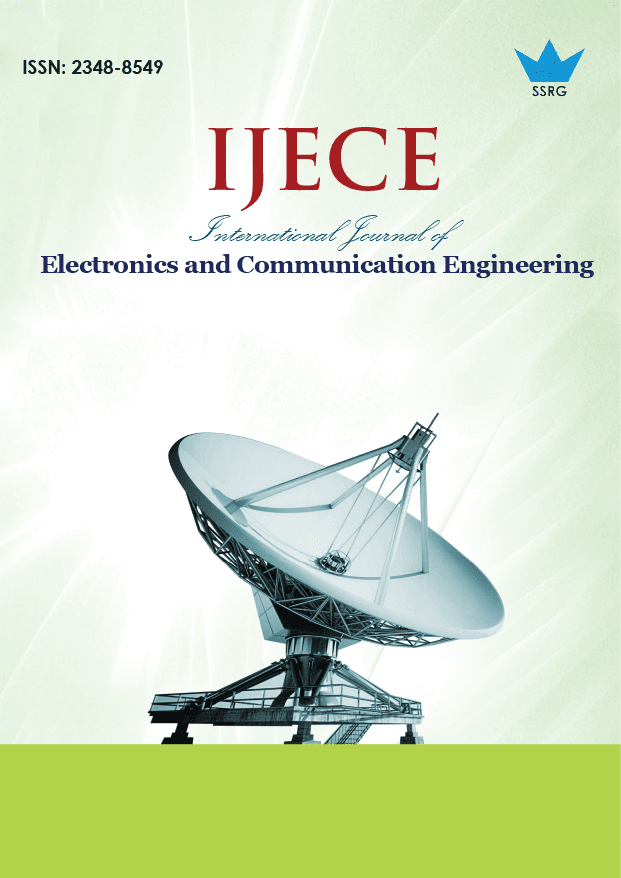An Optimized Federated Learning Algorithm for Decentralized Intrusion Detection Systems Using Artificial Bee Colony Optimization

| International Journal of Electronics and Communication Engineering |
| © 2025 by SSRG - IJECE Journal |
| Volume 12 Issue 10 |
| Year of Publication : 2025 |
| Authors : Shourya Shukla, Ajay Singh Raghuvanshi, Saikat Majumder |
How to Cite?
Shourya Shukla, Ajay Singh Raghuvanshi, Saikat Majumder, "An Optimized Federated Learning Algorithm for Decentralized Intrusion Detection Systems Using Artificial Bee Colony Optimization," SSRG International Journal of Electronics and Communication Engineering, vol. 12, no. 10, pp. 231-251, 2025. Crossref, https://doi.org/10.14445/23488549/IJECE-V12I10P118
Abstract:
With the advancement in IoT technologies, Wireless Sensor Networks have found many applications in the modern era. Due to this, the malicious activities in the networks have seen a major surge. Data theft and manipulation have been a serious concern among researchers. In real-time scenarios, the data communication from nodes to the servers increases the communication overhead and makes the network vulnerable to attacks. A decentralized detection strategy has become a necessity to detect these intrusions efficiently. Federated Learning algorithms have been a major choice for decentralized learning frameworks. The federated models learn the data patterns based on the trained local models. In this paper, a novel model aggregation strategy has been proposed. The weightage or local share of each client is optimized using the Artificial Bee Colony Optimization algorithm, called the optimized local share. The optimized local share has been utilized for three neural network architectures with five-layer deep structures. A Fully Connected Network, a Long Short-Term Memory network, and a hybrid network were employed to detect intrusions in the network. The NSL-KDD and UNSW-NB15 datasets have been distributed into 5, 10, and 20 clients for local training and aggregated using optimized local shares. Binary and multi-class classification achieved high accuracies, comparable to State-of-the-Art frameworks and centralized learning models, while ensuring data privacy and integrity of each client.
Keywords:
Federated Learning, Intrusion Detection Systems, Artificial Bee Colony Optimization, Deep learning, Model Aggregation.
References:
[1] Leonrdo Babun et al., “A Survey on IoT Platforms: Communication, Security, and Privacy Perspectives,” Computer Networks, vol. 192, 2021.
[CrossRef] [Google Scholar] [Publisher Link]
[2] Aejaz Nazir Lone, Suhel Mustajab, and Mahfooz Alam, “A Comprehensive Study on Cybersecurity Challenges and Opportunities in the IoT World,” Security and Privacy, vol. 6, no. 6, 2023.
[CrossRef] [Google Scholar] [Publisher Link]
[3] Danish Javeed et al., “A Federated Learning-Based Zero Trust Intrusion Detection System for Internet of Things,” Ad Hoc Networks, vol. 162, pp. 1-13, 2024.
[CrossRef] [Google Scholar] [Publisher Link]
[4] Evgenia Novikova, Elena Doynikova, and Sergey Golubev, “Federated Learning for Intrusion Detection in the Critical Infrastructures: Vertically Partitioned Data Use Case,” Algorithms, vol. 15, no. 4, pp. 1-14, 2022.
[CrossRef] [Google Scholar] [Publisher Link]
[5] Chen Zhang et al., “A Survey on Federated Learning,” Knowledge-Based Systems, vol. 216, 2021.
[CrossRef] [Google Scholar] [Publisher Link]
[6] Brendan McMahan et al., “Communication-Efficient Learning of Deep Networks from Decentralized Data,” Proceedings of the 20th International Conference on Artificial Intelligence and Statistics, PMLR, vol. 54, pp. 1273-1282, 2017.
[Google Scholar] [Publisher Link]
[7] Tian Li et al., “Federated Optimization in Heterogeneous Networks,” Proceedings of Machine Learning and Systems 2, 2018.
[Google Scholar] [Publisher Link]
[8] Meryem Janati Idrissi et al., “Fed-ANIDS: Federated Learning for Anomaly-Based Network Intrusion Detection Systems,” Expert Systems with Applications, vol. 234, 2023.
[CrossRef] [Google Scholar] [Publisher Link]
[9] Othmane Friha et al., “FELIDS: Federated Learning-Based Intrusion Detection System for Agricultural Internet of Things,” Journal of Parallel and Distributed Computing, vol. 165, pp. 17-31, 2022.
[CrossRef] [Google Scholar] [Publisher Link]
[10] Jonathas A. de Oliveira et al., “F-NIDS — A Network Intrusion Detection System based on Federated Learning,” Computers Networks, vol. 236, 2023.
[CrossRef] [Google Scholar] [Publisher Link]
[11] Zhigang Jin et al., “FL-IIDS: A Novel Federated Learning-Based Incremental Intrusion Detection System,” Future Generation Computer Systems, vol. 151, pp. 57-70, 2024.
[CrossRef] [Google Scholar] [Publisher Link]
[12] Jianbin Li et al., “An Efficient Federated Learning System for Network Intrusion Detection,” IEEE Systems Journal, vol. 17, no. 2, pp. 2455-2464, 2023.
[CrossRef] [Google Scholar] [Publisher Link]
[13] Thin Tharaphe Thein, Yoshiaki Shiraishi, and Masakatu Morii, “Personalized Federated Learning-Based Intrusion Detection System: Poisoning Attack and Defense,” Future Generation Computer Systems, vol. 153, pp. 182-192, 2024.
[CrossRef] [Google Scholar] [Publisher Link]
[14] Dinesh Chowdary Attota et al., “An Ensemble Multi-View Federated Learning Intrusion Detection for IoT,” IEEE Access, vol. 9, pp. 117734-117745, 2021.
[CrossRef] [Google Scholar] [Publisher Link]
[15] Riccardo Lazzarini, Huaglory Tianfield, and Vassilis Charissis, “Federated Learning for IoT Intrusion Detection,” AI, vol. 4, no. 3, pp. 509-530, 2023.
[CrossRef] [Google Scholar] [Publisher Link]
[16] Ruijie Zhao et al., “Semisupervised Federated-Learning-Based Intrusion Detection Method for Internet of Things,” IEEE Internet of Things Journal, vol. 10, no. 10, pp. 8645-8657, 2023.
[CrossRef] [Google Scholar] [Publisher Link]
[17] Priyanka Verma, John G. Breslin, and Donna O’Shea, “FLDID: Federated Learning Enabled Deep Intrusion Detection in Smart Manufacturing Industries,” Sensors, vol. 22, no. 22, pp. 1-18, 2022.
[CrossRef] [Google Scholar] [Publisher Link]
[18] Xi Yu et al., “Federated Learning Optimization Algorithm for Automatic Weight Optimal,” Computational Intelligence and Neuroscience, vol. 2022, no. 1, pp. 1-19, 2022.
[CrossRef] [Google Scholar] [Publisher Link]
[19] Xinyan Li, Huimin Zhao, and Wu Deng, “IOFL: Intelligent-Optimization-Based Federated Learning for Non-IID Data,” IEEE Internet Things Journal, vol. 11, no. 9, pp. 16693-16699, 2024.
[CrossRef] [Google Scholar] [Publisher Link]
[20] Sunghwan Park, Yeryoung Suh, and Jaewoo Lee, “FedPSO: Federated Learning using Particle Swarm Optimization to Reduce Communication Costs,” Sensors, vol. 21, no. 2, pp. 1-13, 2021.
[CrossRef] [Google Scholar] [Publisher Link]
[21] Dasaradharami Reddy Kandati, and Thippa Reddy Gadekallu, “Federated Learning Approach for Early Detection of Chest Lesion Caused by COVID-19 Infection Using Particle Swarm Optimization,” Electronics, vol. 12, no. 3, pp. 1-19, 2023.
[CrossRef] [Google Scholar] [Publisher Link]
[22] Chunmai Xu et al., “Learning Rate Optimization for Federated Learning Exploiting Over-the-Air Computation,” IEEE Journal on Selected Areas in Communications, vol. 39, no. 12, pp. 3742-3756, 2021.
[CrossRef] [Google Scholar] [Publisher Link]
[23] Randhir Kumar et al., “A Distributed Intrusion Detection System to Detect DDoS Attacks In Blockchain-Enabled IoT Network,” Journal of Parallel and Distributed Computing, vol. 164, pp. 55-68, 2022.
[CrossRef] [Google Scholar] [Publisher Link]
[24] Abdallah R. Gad et al., “A Distributed Intrusion Detection System using Machine Learning for IoT based on ToN-IoT Dataset,” International Journal of Advanced Computer Science and Applications, vol. 13, no. 6, pp. 548-563, 2022.
[CrossRef] [Google Scholar] [Publisher Link]
[25] K. Samunnisa, G. Sunil Vijaya Kumar, and K. Madhavi, “Intrusion Detection System in Distributed Cloud Computing: Hybrid Clustering and Classification Methods,” Measurement: Sensors, vol. 25, pp. 1-12, 2023.
[CrossRef] [Google Scholar] [Publisher Link]
[26] Gustavo A. Nunez Segura, Arsenia Chorti, and Cintia Borges Margi, “Centralized and Distributed Intrusion Detection for Resource-Constrained Wireless SDN Networks,” IEEE Internet of Things Journal, vol. 9, no. 10, pp. 7746-7758, 2022.
[CrossRef] [Google Scholar] [Publisher Link]
[27] Sumathi Sokkalingam, and Rajesh Ramakrishnan, “An Intelligent Intrusion Detection System for Distributed Denial of Service Attacks: A Support Vector Machine with Hybrid Optimization Algorithm Based Approach,” Concurrency and Computation: Practice and Experience, vol. 34, no. 27, pp. 1-18, 2022.
[CrossRef] [Google Scholar] [Publisher Link]
[28] Shaashwat Agrawal et al., “Federated Learning for Intrusion Detection System: Concepts, Challenges and Future Directions,” Computer Communications, vol. 195, pp. 346-361, 2022.
[CrossRef] [Google Scholar] [Publisher Link]
[29] Dervis Karaboga, and Bahriye Basturk, “A Powerful and Efficient Algorithm for Numerical Function Optimization: Artificial Bee Colony (ABC) Algorithm,” Journal of Global Optimization, vol. 39, pp. 459-471, 2007.
[CrossRef] [Google Scholar] [Publisher Link]
[30] Mahbod Tavallaee et al., “A Detailed Analysis of the KDD CUP 99 Data Set,” 2009 IEEE Symposium on Computational Intelligence for Security and Defense Applications, Ottawa, ON, Canada, pp. 1-6, 2009.
[CrossRef] [Google Scholar] [Publisher Link]
[31] Nour Moustafa, and Jill Slay, “UNSW-NB15: A Comprehensive Data Set for Network Intrusion Detection Systems (UNSW-NB15 Network Data Set),” 2015 Military Communications and Information Systems Conference (MilCIS), Canberra, ACT, Australia, pp. 1-6, 2015.
[CrossRef] [Google Scholar] [Publisher Link]
[32] R. Vinayakumar et al., “Deep Learning Approach for Intelligent Intrusion Detection System,” IEEE Access, vol. 7, pp. 41525-41550, 2019.
[CrossRef] [Google Scholar] [Publisher Link]
[33] Mohammad Almseidin et al., “Evaluation of Machine Learning Algorithms for Intrusion Detection System,” 2017 IEEE 15th International Symposium on Intelligent Systems and Informatics (SISY), Subotica, Serbia, pp. 277-282, 2017.
[CrossRef] [Google Scholar] [Publisher Link]
[34] Bhupendra Ingre, Anamika Yadav, and Atul Kumar Soni, “Decision Tree based Intrusion Detection System for NSL-KDD Dataset,” Information and Communication Technology for Intelligent Systems, pp. 207-218, 2018.
[CrossRef] [Google Scholar] [Publisher Link]
[35] Dongzi Jin et al., “SwiftIDS: Real-Time Intrusion Detection System based on LightGBM and Parallel Intrusion Detection Mechanism,” Computers & Security, vol. 97, 2020.
[CrossRef] [Google Scholar] [Publisher Link]

 10.14445/23488549/IJECE-V12I10P118
10.14445/23488549/IJECE-V12I10P118